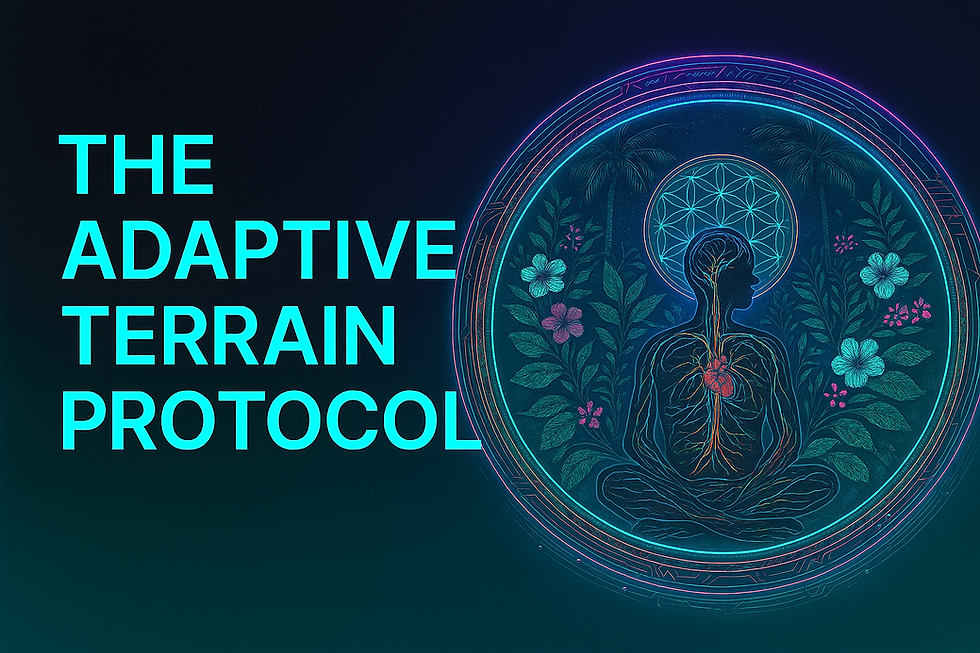Resilience is the New ROI: Implications For the Future of Work
- 4marcusrobinson
- Oct 2
- 3 min read
by Dr. Marcus Robinson | DCH, IHP (c0 2025)

The Big Idea
What if I told you the greatest threat to your company’s future isn’t AI, automation, or global competition—it’s the rising cost of keeping your people healthy?
Right now, healthcare costs are rising faster than revenue growth. Chronic conditions—diabetes, cardiovascular disease, burnout—are eating into margins. And the way we’ve been addressing it? Reactive, fragmented, and expensive.
We wait until employees are sick, then we pay the highest price to treat them. It’s like waiting for the roof to collapse before we fix the leak.
Here Is The Problem
Seventy-five percent of healthcare costs come from preventable chronic conditions. Traditional healthcare focuses on addressing symptoms late in the cycle, when expenses are at their peak. This leads to higher premiums, absenteeism, presenteeism, and disengagement. “We’re not just losing money—we’re losing resilience, creativity, and human potential. And as Chief People Officers, this pressure is something you face every day.
A Needed Shift in Perspective
Here’s the shift: health is not a static state—it’s a terrain. Think of terrain as the foundation: metabolic balance, mitochondrial energy, bioenergetic coherence, and psychosocial resilience. Ancient healing traditions understood this. Modern systems biology confirms it. Resilience doesn’t come from suppressing symptoms—it comes from cultivating terrain.” “Imagine if your workforce wasn’t just less sick—but more adaptive, more energized, more creative.
The Solution: Adaptive Terrain Protocol
“This is where the Adaptive Terrain Protocol comes in. It rests on three principles:
Terrain over Symptoms – Focus on resilience, not suppression.
Feedback over Fixity – Real-time recalibration with wearables, biomarker dashboards, bioresonance scans.
Integration over Isolation – Nutrition, bioenergetics, and symbolic practices woven into a coherent system.
For organizations, this means:
Clinical impact: Lower claims by addressing root causes early.
Organizational impact: Embedding wellness into leadership and culture.
Individual impact: Empowering employees to track and improve their own healthspan.”
The Strategic Advantage
Companies that adopt terrain-adaptive wellness don’t just save money—they gain a competitive edge.
Lower healthcare costs.
Higher engagement and retention.
Stronger leadership resilience.
Your competitors are investing in AI and automation. But the real differentiator will be human resilience. Because no matter how advanced technology becomes, it’s people who innovate, lead, and create culture.
The Cultural Transformation
Healthcare costs are not just a financial issue—they’re a cultural one.
When employees feel like their health is reduced to claims and prescriptions, they disengage. But when they feel supported holistically—body, mind, and energy—they bring their best selves to work. Terrain-adaptive wellness reframes health as a living ecosystem, not a cost center. It honors both data and humanity. It tracks outcomes while restoring meaning, connection, and purpose.
Final Thoughts
The future of work will belong to organizations that understand this: resilience is the new ROI. As Chief People Officers, you have the power to transform costs into culture, and culture into competitive edge. The question is not whether healthcare costs will keep rising—they will. The question is whether you will lead the way in reimagining how we care for the people who make your company possible. Because when you invest in terrain, you don’t just save money—you build a workforce that can thrive into the future.
About the Author:
Marcus Robinson, DCH, has been a leader in the human potential and social change movements since 1985. He holds a doctorate in clinical hypnotherapy and is nationally certified as an Integrative Health Practitioner. His work has inspired many, and he is a published author with three books and numerous articles in these fields.
Content Disclaimer:
Neither the author nor the publisher is engaged in providing advice or services to individual readers. The information in this article is for educational purposes only and should not be construed as medical advice. It is not intended to diagnose or replace qualified medical supervision. For any medical conditions, individuals are encouraged to consult a healthcare provider before using any information, ideas, or products discussed. Neither the author nor the publisher will be responsible for any loss or damage allegedly arising from any information or suggestions made in this article. While every effort has been made to ensure the accuracy of the information presented, neither the author nor the publisher assumes any responsibility for errors.. Written with the support of Grammarly and Copilot AI.




Comments